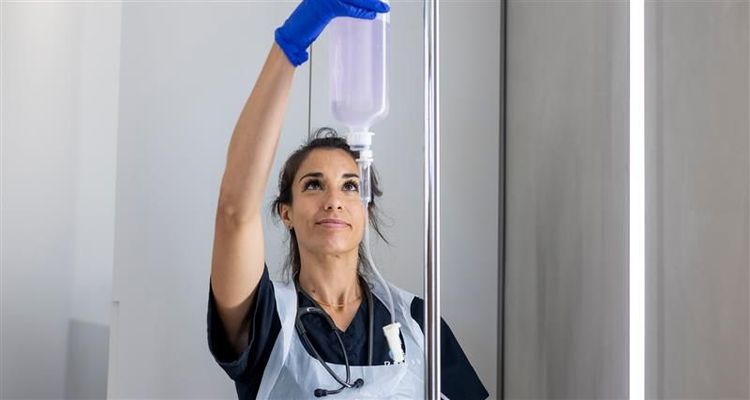As the popularity of home IV drip therapy grows, many people are curious about its safety. While this treatment can offer significant health benefits, it’s important to understand the associated risks and address common concerns. In this article, we’ll explore the safety of home IV drips and answer some frequently asked questions.
Understanding Home IV Drips
IV Drip at home in Dubai involve administering fluids, vitamins, minerals, and other nutrients directly into the bloodstream via a vein. This method allows for quick absorption and immediate effects, making it an appealing option for those looking to boost hydration, energy, or overall health. However, like any medical procedure, it comes with potential risks and concerns.
Common Safety Concerns
1. Risk of Infection
One of the most significant concerns with IV therapy is the risk of infection. Introducing a needle into the body can potentially allow bacteria to enter the bloodstream, leading to infections such as cellulitis or more serious bloodstream infections.
Mitigation Strategies: To reduce this risk, it's crucial to ensure that the IV drip is administered by a qualified healthcare professional. They should use sterile techniques, including:
- Proper hand hygiene
- Sterilization of the injection site
- Use of sterile equipment
2. Phlebitis and Thrombophlebitis
Phlebitis refers to inflammation of the vein where the IV is inserted. Thrombophlebitis occurs when a blood clot forms in the inflamed vein. Both conditions can cause pain, swelling, and redness around the IV site.
Mitigation Strategies: To minimize the risk of phlebitis and thrombophlebitis:
- Rotate the IV site regularly to prevent irritation.
- Ensure the IV catheter is properly secured and not left in place longer than necessary.
- Use the smallest gauge needle necessary for the treatment.
3. Allergic Reactions
Some individuals may experience allergic reactions to the substances administered in the IV drip, including vitamins or other additives. Reactions can range from mild (itching or rash) to severe (anaphylaxis).
Mitigation Strategies: Before starting any IV therapy, it’s essential to inform your healthcare provider about any known allergies or sensitivities. They can customize the formulation to avoid potential allergens.
4. Fluid Overload
Receiving too much fluid through IV therapy can lead to fluid overload, which can cause symptoms such as swelling, high blood pressure, and even heart failure in severe cases.
Mitigation Strategies: A qualified healthcare professional should assess your fluid needs and monitor your intake during treatment. It’s essential to stick to recommended fluid volumes based on individual health conditions.
5. Incorrect Dosage
Inadequate or excessive dosages of nutrients can lead to complications. For example, too much Vitamin C can cause gastrointestinal distress, while excessive potassium can lead to heart complications.
Mitigation Strategies: Home IV drips should only be administered based on a thorough assessment of your health. Blood tests can help determine nutrient deficiencies and appropriate dosages. Always consult with a healthcare professional before starting IV therapy.
Frequently Asked Questions
1. Who Should Consider Home IV Drips?
Home IV therapy can be beneficial for individuals who are:
- Dehydrated or recovering from illness
- Experiencing fatigue or low energy levels
- Seeking to enhance their nutritional intake
- Looking for improved hydration, especially athletes or those with active lifestyles
However, it may not be suitable for everyone. Those with certain medical conditions, such as heart disease or severe kidney problems, should consult their healthcare provider before considering IV therapy.
2. How Often Should I Receive Home IV Drips?
The frequency of treatments can vary based on individual health needs and goals. Some may benefit from weekly sessions, while others might require monthly treatments. Your healthcare provider can help determine the appropriate schedule for you.
3. Can I Administer IV Drips at Home Myself?
While some people may be tempted to administer their own IV drips at home, it is strongly discouraged unless you are a trained healthcare professional. Proper technique and knowledge of anatomy are essential to ensure safety and avoid complications.
4. What Should I Expect During a Home IV Session?
During a home IV drip session, you can expect the following:
- A qualified healthcare professional will arrive to set up the IV.
- They will clean and prepare the injection site, then insert the needle into your vein.
- The IV drip will be administered over a specified period, during which you can relax or engage in light activities.
- The professional will monitor your comfort and check for any adverse reactions.
5. Are Home IV Drips Covered by Insurance?
Coverage for home IV therapy varies by insurance provider and policy. It’s best to check with your insurance company to determine what treatments are covered and any requirements that may apply.
Conclusion
Home IV drips can be a safe and effective way to enhance hydration and nutritional intake, provided they are administered correctly. Understanding the potential risks and concerns is crucial for anyone considering this treatment. Consulting with a qualified healthcare professional can help ensure a safe and beneficial experience. With the right precautions in place, home IV therapy can be a valuable tool in maintaining optimal health and well-being.





Comments